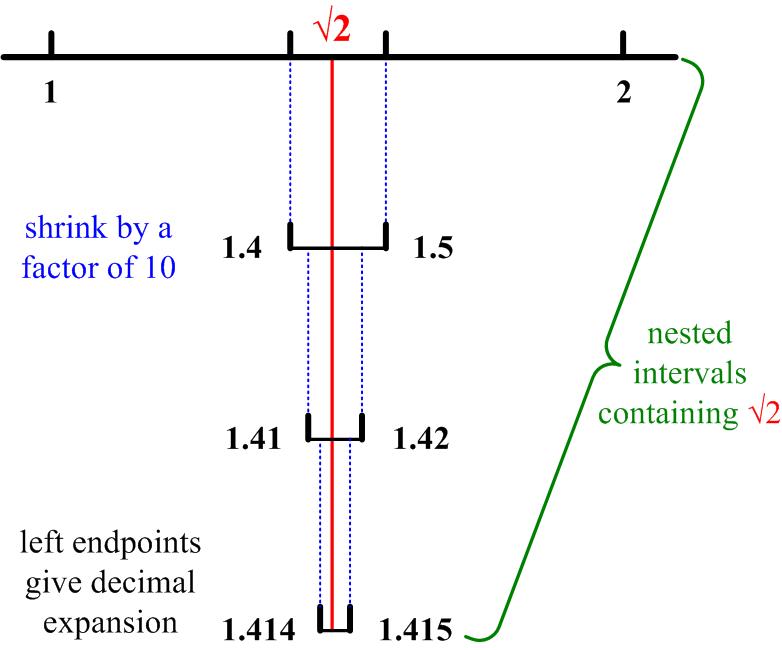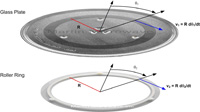 Probably the most satisfying article I have put together is a recent one on point set topology. An old friend of mine, who studied math and physics in college but ended up getting a doctorate in English, asked me, what was topology? Knowing that there were two main branches of topology (general or point set topology and algebraic topology), I chose to describe point set topology first, especially since it was what I was most familiar with and had worked with most in my graduate work.
Probably the most satisfying article I have put together is a recent one on point set topology. An old friend of mine, who studied math and physics in college but ended up getting a doctorate in English, asked me, what was topology? Knowing that there were two main branches of topology (general or point set topology and algebraic topology), I chose to describe point set topology first, especially since it was what I was most familiar with and had worked with most in my graduate work.
The essay turned out to have a surprising structure more like a musical theme and variations. The theme was the geometric series. I found it to be a wonderful medium to show the evolution of ideas (acting as variations) from the early Greeks (Zeno’s Paradoxes) through the development of calculus, decimal expansions of real numbers, to power series, metric spaces, and finally general topologies.
There was an additional benefit to this series of transformations of an initial idea: one of the major aspects of true mathematics became evident, namely, the extension of an idea into new territories that reveal unexpected connections to other forms of mathematics. Treating complicated functions as points in a topological space was a wonderful idea developed over the end of the 19th and beginning of the 20th centuries and became the basis of the field of functional analysis. See Point Set Topology (revised).
(Update 6/3/2021) Slightly revised version.
I happened to review this article and noticed I made a mistake in my integration example. I have no idea what I was thinking at the time, so I corrected it. As I reviewed the rest of the article, I noticed a bunch of “typos” that would make the text confusing, so I corrected those as well. And finally I rephrased wording in a couple of places to try to make things clearer.

 Virtually the very first “math” problem I got interested in involved a 7th grade homework problem in 2005 that a colleague at work said her son had been given. I ended up commenting and helping on a number of further problems, which gave me some insight into the state of current public school teaching in mathematics. It was both encouraging and discouraging at the same time. I will join the math education commentary at a later date.
Virtually the very first “math” problem I got interested in involved a 7th grade homework problem in 2005 that a colleague at work said her son had been given. I ended up commenting and helping on a number of further problems, which gave me some insight into the state of current public school teaching in mathematics. It was both encouraging and discouraging at the same time. I will join the math education commentary at a later date. In 2011 I wrote about an amusing article in the 9 September 1978 Washington Post in which the reporter, Henry Allen, began thinking about the number of ancestors he had 10 generations ago. He figured that each generation had 2 parents, so the 10th generation would have 2^10 or over a thousand members. At 25 years per generation he started imagining the expanding number of direct ancestors he had going back through history, achieving astronomical numbers, which did not seem reasonable. As reporters do, he started interviewing people to get to the bottom of the problem. See the
In 2011 I wrote about an amusing article in the 9 September 1978 Washington Post in which the reporter, Henry Allen, began thinking about the number of ancestors he had 10 generations ago. He figured that each generation had 2 parents, so the 10th generation would have 2^10 or over a thousand members. At 25 years per generation he started imagining the expanding number of direct ancestors he had going back through history, achieving astronomical numbers, which did not seem reasonable. As reporters do, he started interviewing people to get to the bottom of the problem. See the  As my opening post, I begin with something I noticed back in 2011 when we purchased a new microwave that had a revolving carousel to distribute the heating. The glass plate was turning faster than the plastic support ring under it. I wondered if the speed depended on the size of the support ring and/or the size of its roller wheels.
As my opening post, I begin with something I noticed back in 2011 when we purchased a new microwave that had a revolving carousel to distribute the heating. The glass plate was turning faster than the plastic support ring under it. I wondered if the speed depended on the size of the support ring and/or the size of its roller wheels.